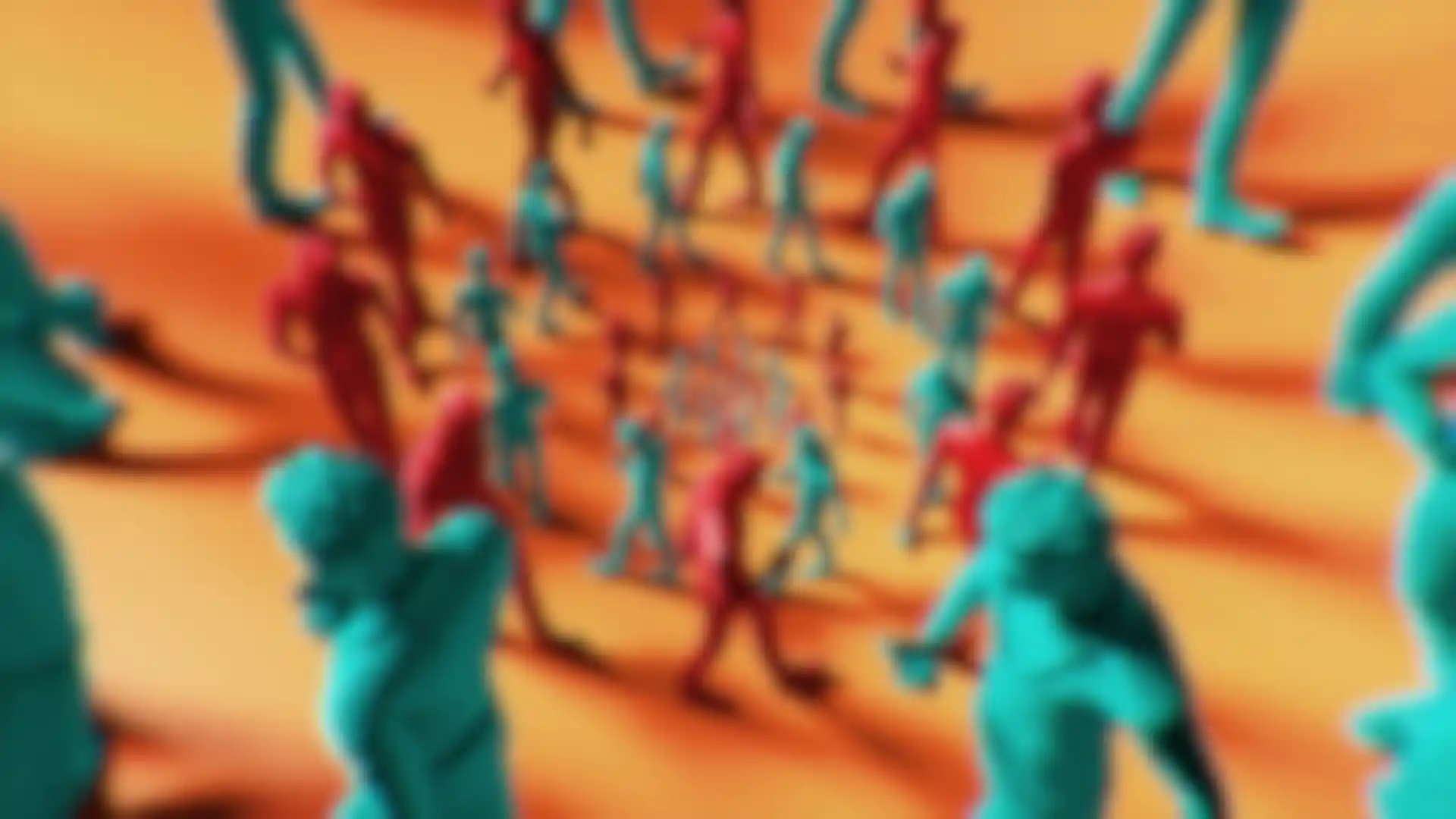
Creating a VJ Set for the Glastonbury Festival What do you do when the brief calls for animations for any kind of music?
Lee Robinson has been working in the field of motion design and animation for many years, and this experience has enabled him to work with some of the leading design studios in the world, including The Mill, MPC, Territory and many more.
His studio, Altered TV, was founded with the goal of producing high-quality design and a focus on experimentation and innovation. During the Covid lockdown, Robinson met Adam Savant from PF Events, who oversees The Truth Stage at Glastonbury. In an area called Shangri-La, the stage has screens that show political and ecological films during the festival.
Robinson had always wanted to show his work at Glastonbury and had been working on an ecological animation in which the world was covered in concrete. All life was gone except for a small shoot that emerges and life returns. Savant, though, suggested something else—a VJ set.
“I thought that was fantastic, Robinson recalls,” not yet realizing he would need to create hours of animations. “Even though it was an extremely daunting prospect, I found it to be a great creative construct to be able to create anything I wanted to fit any kind of music!”
The deadline was very tight, though, and he would have to make it outside of work hours, but he accepted the challenge and used Cinema 4D, After Effects, Mixamo, X-Particles and Redshift to create a VJ set for the space.
His initial thoughts centered around what people want to do at festivals. The animations would be shown on a dance stage, so he focused on using Mixamo first to create some dancer scenes. After importing the dancer model into Cinema 4D, he created several copies using a cloner object, adding a camera move around the dancers.

Next, he embellished the environment with more cloned elements, using a MoGraph effector with a sound field synced to a simple piece of imported audio. Once rendered with Redshift, including a puzzle matte to isolate the dancers, the layers were offset and colored in After Effects, giving them a rainbow-like echo effect.
“It was a fun piece, but it wasn't really me,” Robinson recalls. So he made another version that featured a stage with a large dome and a bright volumetric light at the top. “It still wasn't quite right, so I cloned some spheres onto the dancer and that worked really well.”

Then, he used a super wide-angle camera lens to distort the scene as the camera spun around the dancer. The scene was rendered from various camera positions and colors of the volumetric light in preparation of the final After Effects work.
Various other scenes were created to complement the dancer animations. For example, he cloned some spheres onto another larger sphere, made them dynamic and then used a plain effector with a sound field to animate the spheres to pulse and flash to the beat of the music.
Time was short, so Robinson used the same dancer animation for a different animation only, that time, he used X-Particles. Generating particles from the dancer mesh and using an emissive texture, different colored luminous particles were rendered with the Redshift tag.

The camera was set to a very short depth of field and various post effects on the camera tag were used to give the whole scene a sparkly, ephemeral feeling. That led to various other particle scenes focusing on the whole spiritual element of the festival.
Knowing the Shangri-La area at Glastonbury is known for its political art and ecological stance, Robinson also wanted to incorporate those kinds of themes into his animations. “I was struck by people walking down the street oblivious to the world around them, absorbed by their phones,” he says.
So he made a series of animations focusing on the concept of personal data usage and the idea of Big Brother watching us, as well as various loops highlighting the repetitive nature of the modern world—"eat, sleep, look at your phone, repeat.”


After finding a male character walking and staring down at his phone on Mixamo, Robinson cloned a field of surveillance cameras that included target tags, allowing the cameras to follow the man as he walked. He expanded on that surveillance concept by creating a gray texture with a red circle in the middle. Using camera projection directly above the walker, he was able to color the whole scene with one texture as the red circle followed the character.
Feedback on his work for the festival was positive and Robinson has continued to develop and post personal projects on Instagram under the name Dr. Lee. to increase his skills.
“I recommend everyone create personal projects outside of work; or even have a go at an every day challenge. It’s an amazing way to increase your technique, your knowledge and speed. You will be surprised by the rapid improvement you will see in your work.”